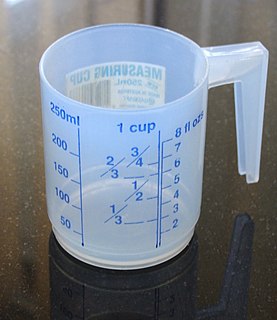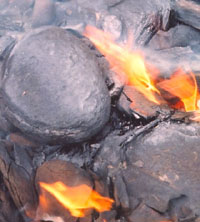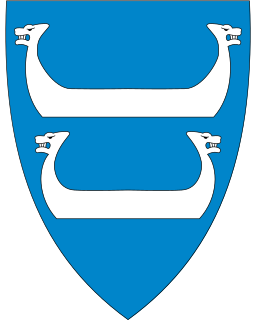A tønne (plural tønner) [1] is an old Norwegian unit of volume equivalent to a barrel. There was a dry tønne and a liquid tønne. The volume of a tønne has varied over time in Norway, including many local variations.

Norway, officially the Kingdom of Norway, is a Nordic country in Northwestern Europe whose territory comprises the western and northernmost portion of the Scandinavian Peninsula; the remote island of Jan Mayen and the archipelago of Svalbard are also part of the Kingdom of Norway. The Antarctic Peter I Island and the sub-Antarctic Bouvet Island are dependent territories and thus not considered part of the kingdom. Norway also lays claim to a section of Antarctica known as Queen Maud Land.

Volume is the quantity of three-dimensional space enclosed by a closed surface, for example, the space that a substance or shape occupies or contains. Volume is often quantified numerically using the SI derived unit, the cubic metre. The volume of a container is generally understood to be the capacity of the container; i. e., the amount of fluid that the container could hold, rather than the amount of space the container itself displaces. Three dimensional mathematical shapes are also assigned volumes. Volumes of some simple shapes, such as regular, straight-edged, and circular shapes can be easily calculated using arithmetic formulas. Volumes of complicated shapes can be calculated with integral calculus if a formula exists for the shape's boundary. One-dimensional figures and two-dimensional shapes are assigned zero volume in the three-dimensional space.

A barrel is one of several units of volume applied in various contexts; there are dry barrels, fluid barrels, oil barrels and so on. For historical reasons the volumes of some barrel units are roughly double the volumes of others; volumes in common usage range from about 100 to 200 litres. In many connections the term "drum" is used almost interchangeably with "barrel".
The dry tønne was standardized in 1824 as equivalent to 138.97 liters (3.944 U.S. bu). [2] [3] A tønne of potatoes weighed about 100 kilograms (220 lb). [1] A dry tønne was divided into four fjerdinger , equivalent to 34.71 liters (0.985 U.S. bu) each. The liquid tønne was equivalent to 115.81 liters (25.47 imp gal; 30.59 U.S. gal). [4]
In addition, the term tønne (a "barrel of land") was used as a measurement of area equivalent to 3,937 square meters (0.973 acres). This corresponded to the amount of land that could be sown with one tønne of seed. [1]

A barrel of land is a Scandinavian unit of area. The word may originate from the area of fields one could seed with a barrel of grain seeds. The acre is the equivalent Anglo-Saxon unit. Because the barrel sizes varied by country, the area unit does too. One barrel can be approximated as half a hectare.









